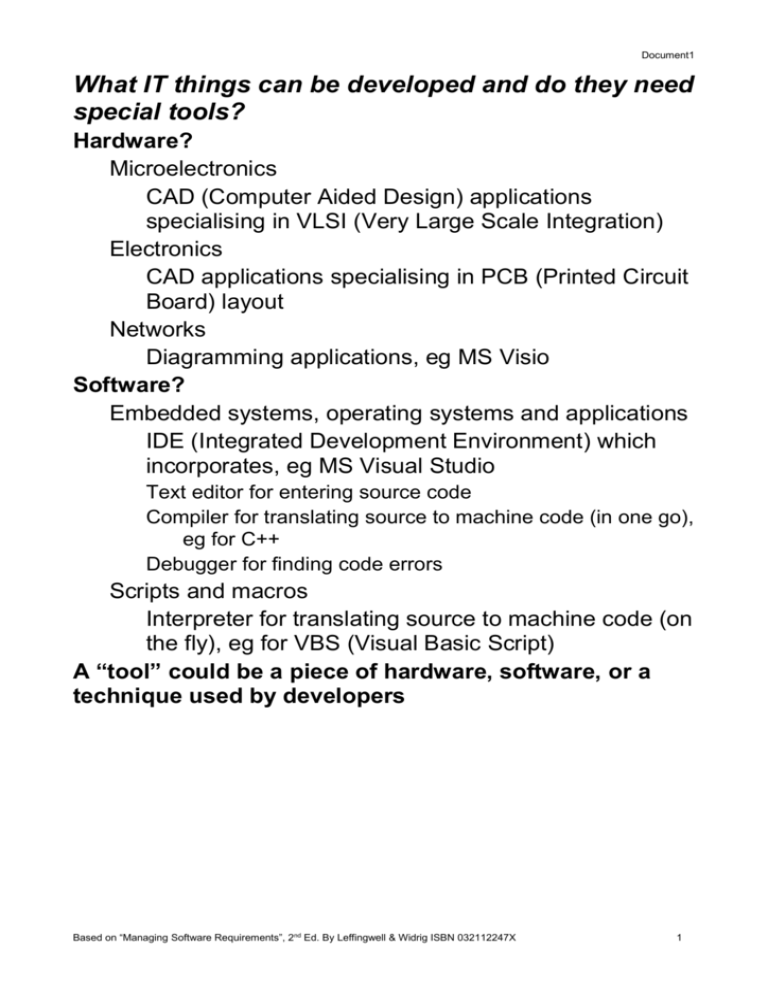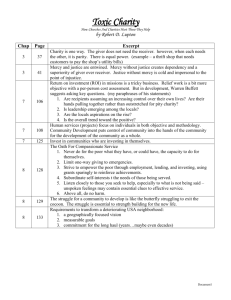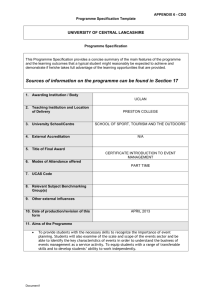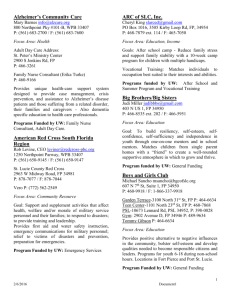development methods
advertisement

Document1 What IT things can be developed and do they need special tools? Hardware? Microelectronics CAD (Computer Aided Design) applications specialising in VLSI (Very Large Scale Integration) Electronics CAD applications specialising in PCB (Printed Circuit Board) layout Networks Diagramming applications, eg MS Visio Software? Embedded systems, operating systems and applications IDE (Integrated Development Environment) which incorporates, eg MS Visual Studio Text editor for entering source code Compiler for translating source to machine code (in one go), eg for C++ Debugger for finding code errors Scripts and macros Interpreter for translating source to machine code (on the fly), eg for VBS (Visual Basic Script) A “tool” could be a piece of hardware, software, or a technique used by developers Based on “Managing Software Requirements”, 2nd Ed. By Leffingwell & Widrig ISBN 032112247X 1 Document1 Are there tools common to all developments? Documentation Contracts Functional (requirements) specifications Test specifications Usage guides Version control Complex systems, are made from more than one source, and each source keeps changing, eg CVS Change management Making the implementation of the new system a smooth as possible for the target users, eg user training Project management Coordinating the elements for the quickest, least cost development, eg MS Project Based on “Managing Software Requirements”, 2nd Ed. By Leffingwell & Widrig ISBN 032112247X 2 Document1 With all these established tools, what could possibly go wrong? 31% of IT projects get cancelled before completion, and 52.7% will cost 189% of budget! (Standish Group, 1994) Why? Biggest contributors were: 13% lack user input 12% have incomplete requirements and specifications 12% change the requirements and specifications The earlier an error is introduced into a project, the more it costs to fix Requirements errors cost 100 times more than maintenance errors Since they are most common and most expensive errors, there is a dire need to manage requirements: Elicit, get requirements from users and stakeholders Organise, there can be a large number of requirements Document, too many requirements to keep in each stakeholder’s head Based on “Managing Software Requirements”, 2nd Ed. By Leffingwell & Widrig ISBN 032112247X 3 Document1 So what’s the best way to develop something? No simple answer, mainly depends on Scale, the number of developers If it is small enough to all fit in one person’s head, just go for it Otherwise, need a development method Criticality, how precise the product needs to be An electronic game would be non-critical A heart pacemaker would be critical Recent years have seen the “method wars” The large risks and way people like to work can cause some to be emotionally involved in the decision to follow one method rather than another No one method fits all projects Methods tend to focus on software but could apply to any type of development Based on “Managing Software Requirements”, 2nd Ed. By Leffingwell & Widrig ISBN 032112247X 4 Document1 Why would you use the Waterfall method? Started out as code-fix cycle Then extended to more steps Finally added feedback loops between every step Requirements Design Coding and unit test System integration Operation and maintenance Good points Forces the requirements to be completed before more work is done Medium to large scale projects Bad points Fixed and rigid, change is difficult Can lose touch with changes in market or users If the scope (collection of functions) is too large, by the deadline nothing works Based on “Managing Software Requirements”, 2nd Ed. By Leffingwell & Widrig ISBN 032112247X 5 Document1 Why would you use the Spiral method? Introduced the idea of creating throw-away prototypes Each evaluated by stakeholders to minimise risks Development cycles through the steps Rapidly for prototypes Prototype N Evaluate System integration Prototype 1 Operation and maintenance Coding and unit test Requirements Design Good points Recognises that requirements change during development Allow multiple feedback opportunities Medium scale projects Bad points There may not be enough time to develop multiple throw-aways Tempting to hang onto poor prototype code Based on “Managing Software Requirements”, 2nd Ed. By Leffingwell & Widrig ISBN 032112247X 6 Document1 Why would you use the Agile method? No throw-away prototypes, only quality code Many releases, reworked after each stakeholder evaluation, means less documentation Can have multiple releases during each project “phase” Tries to unlock the component development steps from the growing knowledge of user requirements Phases Releases Good points Recognises that requirements change during development Each release can be evaluated as a realistic product, no corners cut Small to medium scale projects Bad points More effort to produce each release than a prototype Less reliance on documentation can mean more information falling through the cracks, a problem for critical projects Based on “Managing Software Requirements”, 2nd Ed. By Leffingwell & Widrig ISBN 032112247X 7 Document1 Why would you use the Extreme method? Frequent releases User representative(s) onsite giving continuous feedback Designers work in pairs (share a console) To improve code quality Test their own work Minimises documentation No attempt to document future requirements Design is reworked for every requirement the user currently needs Maybe communicated verbally Good points Fast development High productivity Recognises that requirements change during development Very small scale projects, less than 10 developers Bad points Keeping development team and user representative(s) at one site Less reliance on documentation can mean more information falling through the cracks, a problem for critical projects The latest user requirement might mean a complete change of architecture “This is working great. Now we want it to work over the Internet.” Based on “Managing Software Requirements”, 2nd Ed. By Leffingwell & Widrig ISBN 032112247X 8




